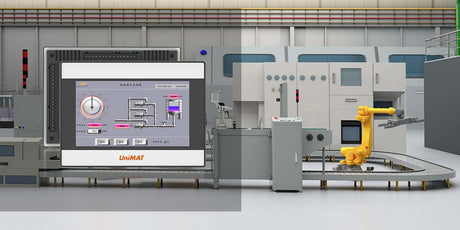Using internet of things (IoT) to connect things, service, and people for intelligent operations has been discussed and deployed in many industry domains such as smart city, smart energy, healthcare, food and water tracking, logistics and retail, and transportation.
However, scarce information is available for IoT usage in industrial automation domain for reliable and collaborative automation with respect to e.g., enabling scalable collaboration between heterogeneous devices and systems, offering predictable and fault-tolerant real-time closed-loop control, and inclusion of intelligent service features from edge devices to the cloud. In this paper, we will clarify the specific quality attribute constraints within industrial automation, present specific industrial IoT challenges due to these constraints, and discuss the potentials of utilizing some technical solutions to cope with these challenges.

Automation not only cuts costs and saves time but instills reliability and precision within the system that has immediate and long-term benefits. Today home automation or hobby projects often conjure images of teenagers working on Arduino, Raspberry Pi and PIC, but the true struggle to make industries and large-scale systems independent began more than five decades ago.

A Programmable Logic Controller (PLC) in its simplest consists of the following:
- CPU: for processing, logic operations and handling the interface
- Memory: for providing retentive or temporary storage
- I/O section: allows the PLC to read environment parameters and respond appropriately
- Power Supply: to drive the entire unit
- Expansion slot: for increasing the PLC’s operational limit
The PLC is one of the earliest electronic automation and control devices that lives on to this very day, and in fact has been standardized due to its ever-advancing features, ruggedness and reliability. Being a miniature computer without peripherals, the PLC is able to read analogue/digital inputs, produce outputs in the form of relay-type switches and boost its data-processing capabilities by connecting to a plethora of expansion slots ranging from ethernet modules to ADC modems.

In the technology world, there’s only one parameter, i.e. change. The infamous Moore’s Law provides a very accurate prediction in terms of transistors, citing change in technology after every single year. In even simpler words, products are bound to get smaller every year. Translating this into industrial terms, this resembles to the size of sensors, chips, relays, electric enclosures, cooling systems, circuit boards and what not.
Allen-Bradley was one of the major companies behind this innovative product, and from there on has been joined by several industrial giants of today including Siemens, Omron and Schneider Electric. The 1980s solidified the need for PLCs throughout industrial systems and eventually Japanese companies like Mitsubishi and American ones like Westinghouse and Eaton also joined the race.
Fast forward into today’s world and Moore’s Law has put companies neck-to-neck when it comes to reducing size and increasing processing capabilities. PLCs in the nano and micro classes are now a norm that offer the full-scale capabilities of decades old ones. The Potential Future of PLCs may have been going at a linear pace, i.e. for monitoring, automating and controlling industrial environments but the injection of IoT or Internet of Things has dynamically changed the competitive environment.

The revolution of internet connectivity to quench the thirst of smartness has multiplied the possibilities, especially when it comes to PLC. The Programmable Logic Controller of the future is no longer tied to a particular geographic zone. Remote connectivity at blazing fast speeds with minimal data loss has become a reality, and an active research field today.
Communication protocols have long existed, e.g. MODBUS, PROFIBUS, etc. however these were built with local connectivity, and thus lesser security concerns. The advent of internet access has resulted in unrestricted flow of information, which can sometimes be a bad idea for classified instalments as well as companies with trade-secrets. This has and will result in constant restructuring of existing protocols in order to make them fool-proof, while ensuring minimal data loss.
The Potential Future of PLCs therefore is one that is closely linked to the development of internet technologies as flexibility, reliability and safety will be the main concerns of the newer generation of industries. Industry 4.0 has already stated the trend of automation and termed it as “smart factory” which quite accurate as it combines elements of electronics, power and communication to provide a multi-pronged solution to any industry problem.
As far as the physical size and internal capabilities of PLCs go, they are only bound to become faster, cheaper and smaller. And even though microcontrollers are coming up with new ways to challenge the almighty PLC, they still have a very long way to go, which seems impossible to catch-up given PLC’s quick rate of adaption.

One thing that’s bound to remain constant is the presence of Ladder Logic. While companies like Siemens have introduced C-style coding for their PLCs, Ladder Logic is an established trade due to its simplicity and widespread use. Parallel programming has been advancing rapidly with the onset of the 21st century and many languages have come and gone, but Ladder Logic is undoubtedly an entity that is capable of withstanding the test of time.
Start a conversation with us, speak to an expert today!









